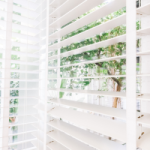This is the time of year when we reflect.
On the footy finals, maybe Melbourne Cup, certainly on tax season.
There are some common mistakes we see in Depreciation Schedules every year, and this year was no exception. Some of you sent them to us to seek our opinion. So we thought given you would still be seeing Depreciation Schedules, this is an apt time to highlight the main errors.
Remember, there are plenty of Depreciation Schedules floating around in tax season prepared by people who don’t do them all the time. Lots of Quantity Surveyors only turn their attention to tax work for a few months of the year.
As for Depreciator, it’s all we do. And we’ve done it for over 20 years. If the only Depreciation Schedules you ever saw came from Depreciator, there would be nothing you had to fix.
If you have a client who needs a Depreciation Schedule, a correct one, make an enquiry here. We’ll call your client and discuss the property and work out the best way to proceed. And if the job is worth doing, we’ll do it quickly. That’s why so many accountants refer their clients to us – more than half our work comes from accountants.
And if you have a Depreciation Schedule you are not sure about, email it to us at affiliates@depreciator.com.au . We can tell quickly if it’s correct or needs to be fixed.
So what are some of those mistakes?
Key Points
Common mistakes we see in other providers’ Depreciation Schedules include:
- Depreciation Schedules that list Capital Works incorrectly as Assets.
- Depreciation schedules for jointly owned properties that do not correctly split the assets.
- Providers who are not aware of or do not make adjustments for changes to depreciation rates in Assets.
- Some providers do not offer the Low Value Pool to help clients claim depreciation faster on assets valued $300-$1,000.
- Depreciation Schedules where items are included as improvements when they can probably be claimed as repairs.
 A kitchen is not an Asset
A kitchen is not an Asset
Kitchen cupboards, sinks, benches – they are all Capital Works. It would be nice if a $20,000 kitchen could be written off faster than 2.5% per year, but that’s not the case.
The appliances in a new kitchen are of course Assets and can be written-off quickly. As can carpets, curtains, air cons etc. But not kitchen cupboards and benches.
And it’s not just kitchens people classify wrongly. Shower screens, pergolas, an inground spa, taps, letterboxes, clotheslines and new door hardware are all things we have seen recently incorrectly classified.
And it might surprise you to learn that some of you are using software that has incorrect or outdated rates.
The ATO have a handy list of what is an Asset vs Capital Works at the back of a very good publication here.
We tell clients, one general test for what is an Asset vs Capital Works is how long the item is likely to last. Kitchen benches, shower screens, taps will all last a long time unless a tenant does something stupid to them. And in that case it becomes a ‘repair’ opportunity.
 Not splitting Schedules properly is laziness
Not splitting Schedules properly is laziness
It’s not unusual for a property to be jointly owned and for each owner to want a Depreciation Schedule. We prepare split Schedules for no additional charge.
The first mistake some companies make is assuming the split is 50/50. It often isn’t, as you would know. So we ask your clients what the split is.
The main mistake made is that some companies will just split the depreciation total and fail to split individual Assets. A $500 oven if owned by two people at 50/50 becomes two ovens at $250 each and can be written-off immediately.
Or a $1,200 hot water heater becomes two items at $600 each and can go into the Low Value Pool.
And if that $1,200 hot water heater is owned, say, 80/20, one owner has a $960 item that can go into the Low Value Pool, and the other owner has a $240 item that can be written-off immediately.
 Depreciation rates for Assets occasionally change
Depreciation rates for Assets occasionally change
Not terribly often, but it happens.
And when it does happen, clients invariably benefit.
Carpet, for example, had its Effective Life reduced from 10 years to 8 years not long ago. Pumps in rainwater tanks had a bigger adjustment.
Chances are these changes are not reflected in your inhouse software, or in the software of some of some Depreciation Schedule providers, but they are in ours.
 Not all providers offer the Low Value Pool
Not all providers offer the Low Value Pool
Goodness knows why. There is no obligation to use it, of course, but we are yet to encounter a client who wants to slow down their depreciation.
The Low Value Pool rates for Assets valued $300 – $1,000 as you would know are 18.75% for the first part year and then 37.5% per year after that. Items with a written down value of less than $1,000 can enter the Pool.
One thing not many people realise is that there is a Low Value Pool available for the Prime Cost method. The difference between the Prime Cost Pool and Diminishing Value Pool is that items in the Prime Cost Low Value Pool are fixed and none can enter it subsequently.
 Repairs vs Renovations
Repairs vs Renovations
We often see ‘improvements’ added to Depreciation Schedules when in our opinion they can probably be claimed as ‘repairs’. A 100% immediate write-off is a lot better than 2.5% over 40 years.
We wrote about this here recently.
It’s worth quizzing clients and digging a bit deeper. Or just trusting your clients to us, because that’s what we’ll do.
If you want us to talk to a client about a Depreciation Schedule, make an enquiry online or email affiliates@depreciator.com.au.
 Christmas will be here before you know it
Christmas will be here before you know it
This will be our final ‘Something You Didn’t Know About Depreciation‘ for the year. But we’ll still be here for you and your clients who may need a Depreciation Schedule.
Depreciator will be staying open, other than public holidays, with reduced staff from 20/12/23 until 08/01/24. Please email affiliates@depreciator.com.au with anything you need help with during this time.
Thank you for your support in 2023. We value your trust and confidence in us and we’re looking forward to another year working together in 2024.
Enquire now for a property-specific assessment
Has this article reminded you about a client’s investment property? Residential properties, commercial properties, even farms, we do them all.
If you want us to talk to a client about a Depreciation Schedule, make a no-obligation enquiry and rely on our 20-plus years of experience in estimating depreciation returns.





